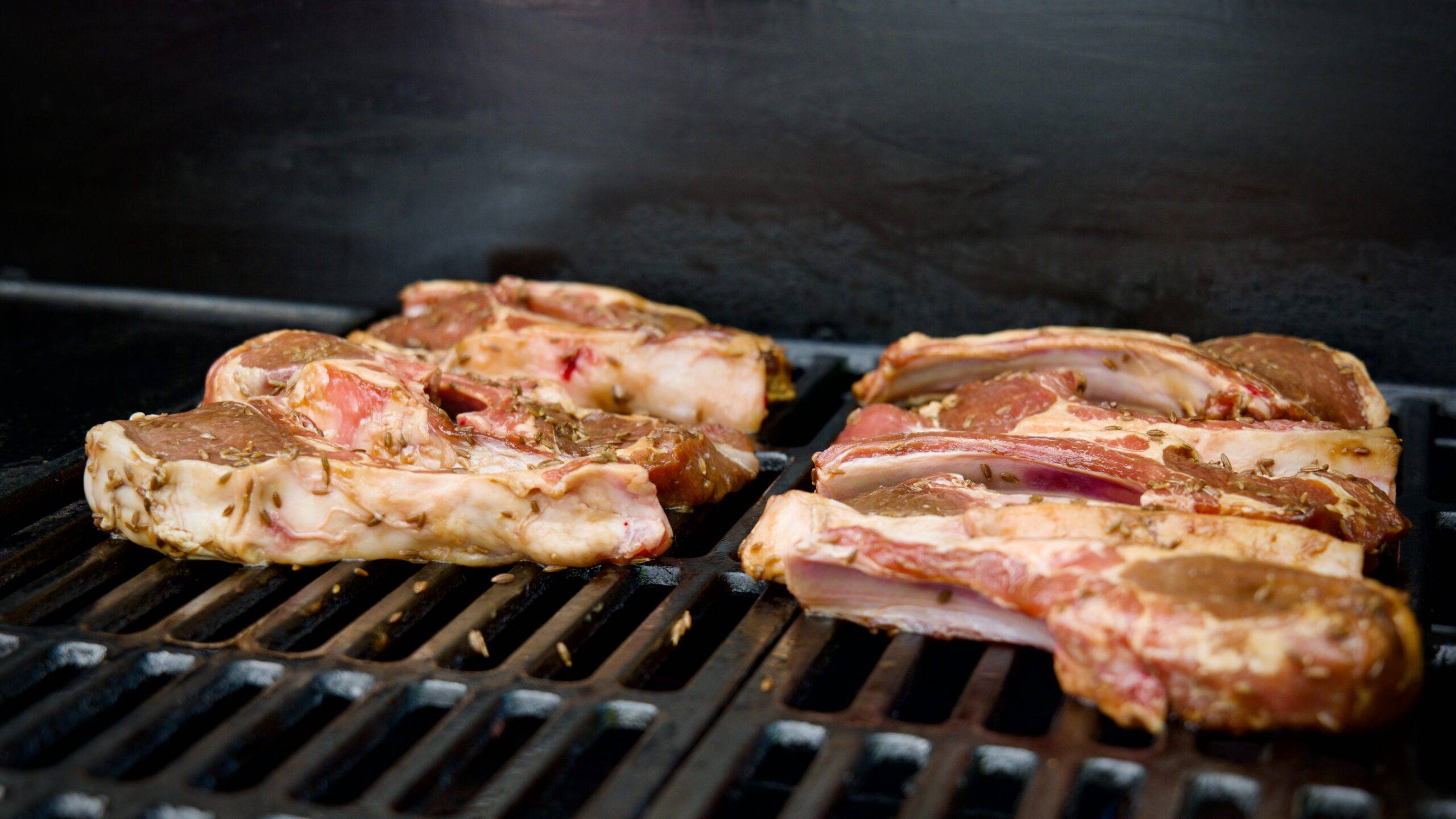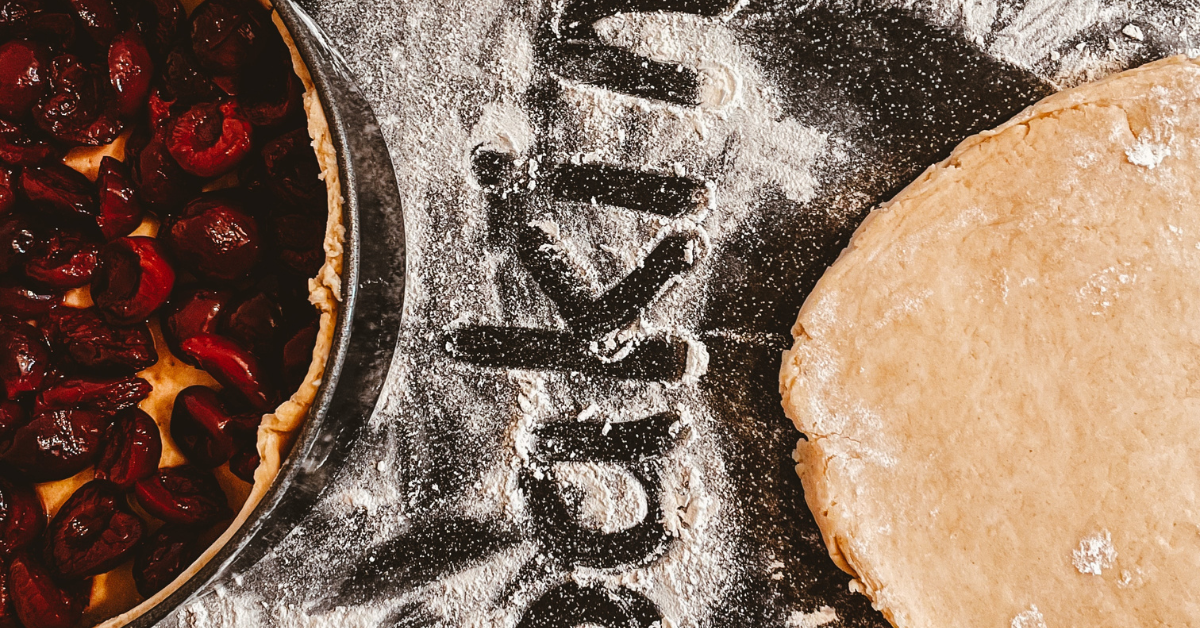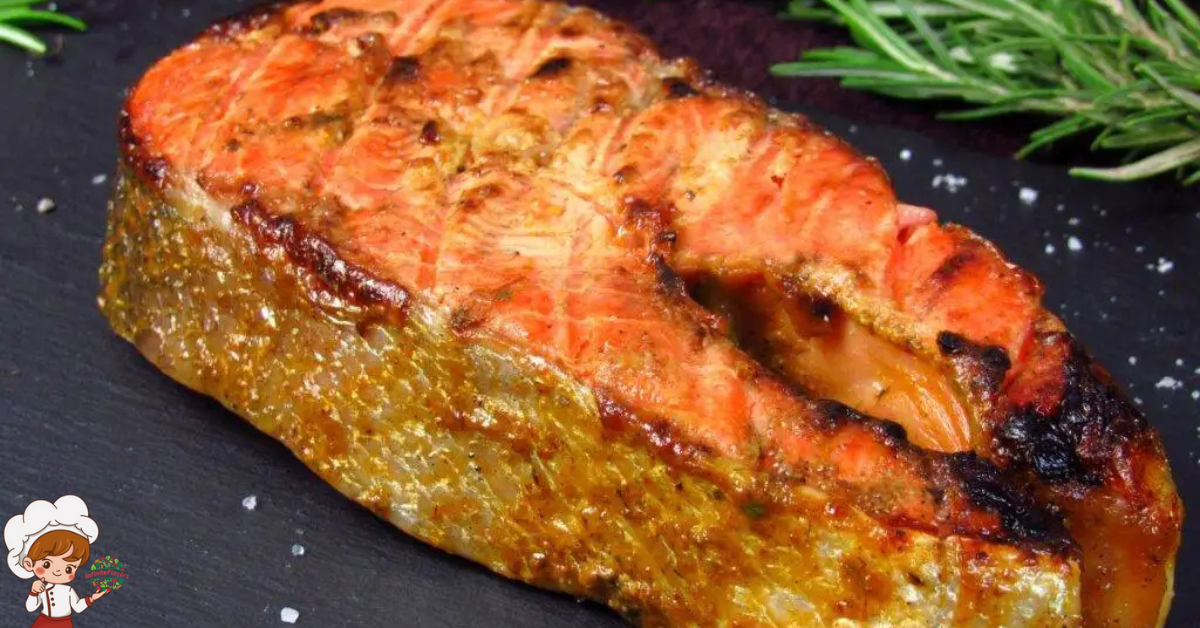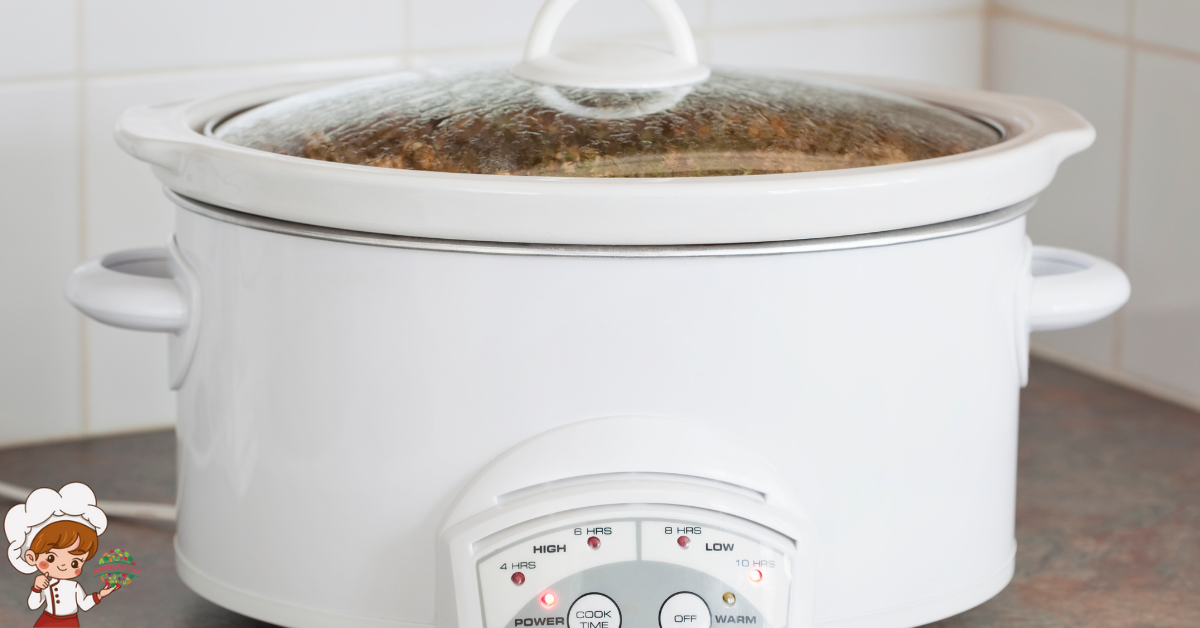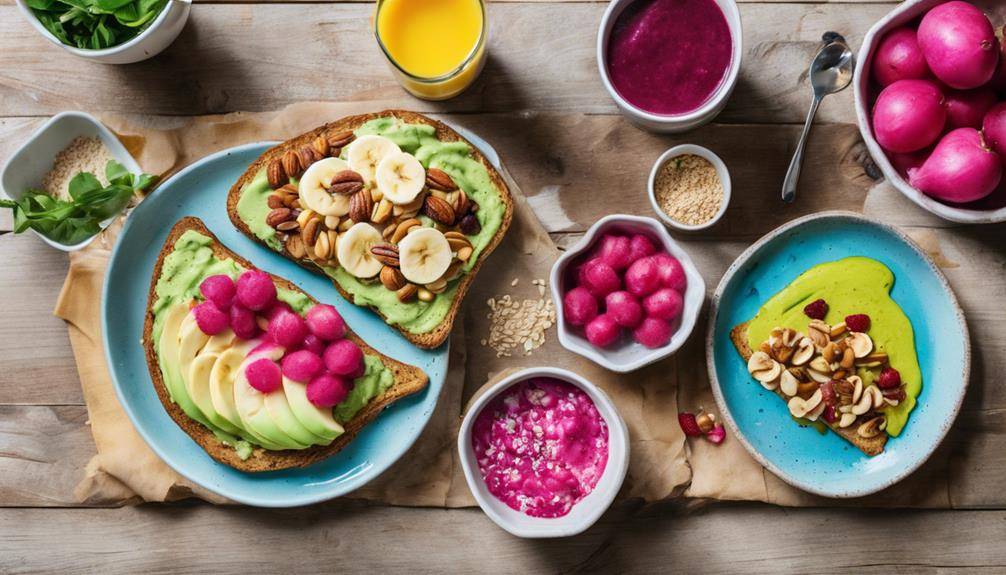15 Proven Tips for Grilling While Camping Outdoors
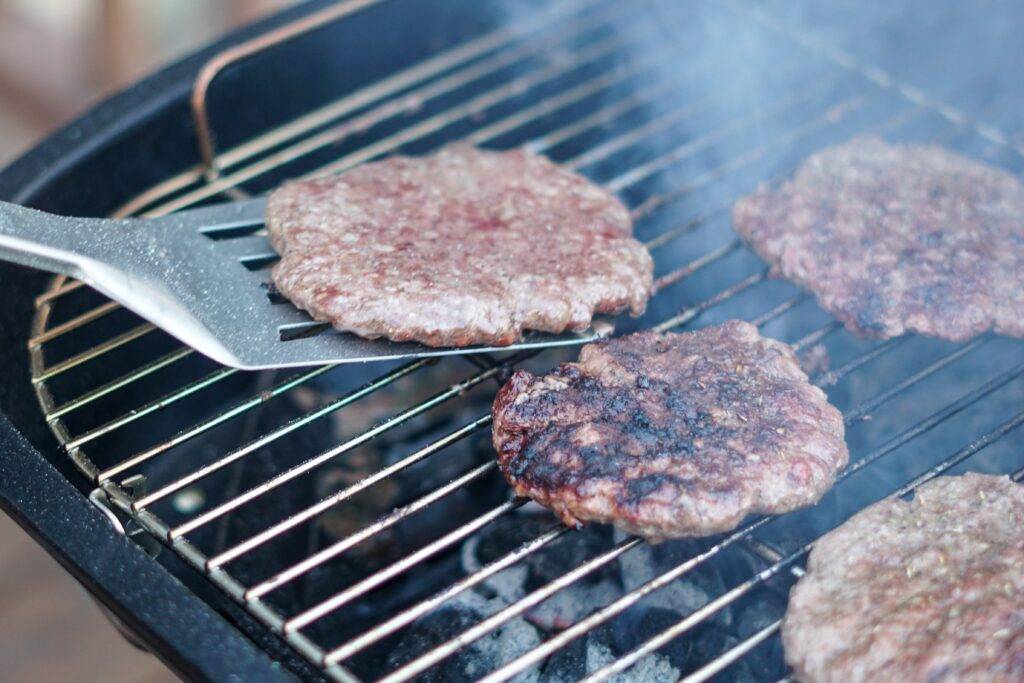
Are you ready to take your Grilling While Camping skills to the next level? Look no further! We’ve got 15 proven tips that will make you the ultimate outdoor grilling master. From choosing the perfect grill to packing the essential tools, planning your meals, and using the right firewood and charcoal, we’ve got you covered. You’ll learn how to build a safe and efficient fire, enhance flavors with delicious marinades and rubs, and get creative with skewers and kebabs. Plus, we’ll show you how to take advantage of the campfire for that smoky goodness. And don’t forget to clean and maintain your grill for long-lasting performance. Get ready to impress your fellow campers with your grilling expertise!
Fire Up the Flavor Anywhere – Grab Your Portable Grill Today!
Choose the Right Grill
To choose the right grill for your camping trip, consider the size of your group and the type of cooking you plan to do. Whether you’re grilling up burgers for a small family or hosting a big barbecue for a group of friends, selecting the appropriate grill is essential for a successful outdoor cooking experience.
When it comes to grill maintenance, it’s important to keep your grill clean and well-maintained. Before each use, make sure to clean the grates and remove any leftover food or debris. Regularly inspect the gas or charcoal connections to ensure they are secure and functioning properly. Additionally, check for any signs of wear or damage, such as rust or loose parts, and address them before using the grill.
Grill safety precautions should also be a top priority. Always grill in a well-ventilated area, away from flammable materials and structures. Keep a fire extinguisher nearby, just in case. If you’re using a gas grill, check for any gas leaks by applying a soapy water solution to the connections and looking for bubbles. Never leave a lit grill unattended, and always keep children and pets at a safe distance.
Pack Essential Grilling Tools
When it comes to grilling while camping, having the right tools is essential for a successful cooking experience. From must-have grilling utensils to compact grill accessories, packing the right tools will make your outdoor cooking a breeze. So, before you head out on your camping adventure, make sure you have all the essential grilling tools packed and ready to go.
Fire Up the Flavor Anywhere – Grab Your Portable Grill Today!
Must-Have Grilling Utensils
Make sure you pack all the essential grilling tools for your camping trip by using a comprehensive checklist of must-have grilling utensils. Here are three items that should be at the top of your list:
- Grill Brush: A sturdy grill brush is essential for keeping your grill grates clean and free from food residue. It will help you achieve those beautiful grill marks and prevent your food from sticking.
- Long-Handled Tongs: Long-handled tongs are a must-have for grilling. They allow you to easily flip and turn your food without getting too close to the hot grill. Look for tongs with a sturdy grip and a locking mechanism for easy storage.
- Instant-Read Thermometer: Grilling is all about timing, and an instant-read thermometer is your best friend when it comes to ensuring that your meat is cooked to perfection. It will help you avoid overcooking or undercooking your food, giving you that juicy and tender result every time.
Compact Grill Accessories
Ensure you pack essential grilling tools by including compact grill accessories on your camping trip. When it comes to compact grill storage, it’s important to choose portable grill options that are lightweight and easy to transport. Look for accessories that are designed specifically for camping grills, such as collapsible grilling utensils and compact grill brushes. These tools are not only space-saving, but they are also durable and built to withstand the rugged conditions of outdoor cooking. Additionally, consider investing in a compact grill cover or carrying case to protect your grill and accessories during travel. By packing these essential compact grill accessories, you can enjoy delicious grilled meals while camping without sacrificing space or convenience.
Plan Your Meals in Advance
When it comes to camping and grilling, planning your meals in advance is crucial for a successful outdoor cooking experience. To make meal prep easier, consider packing essential grilling tools such as tongs, spatulas, and skewers. Additionally, having the right cooking equipment, like a portable grill or a cast iron skillet, can make all the difference in creating delicious meals while camping. Lastly, don’t forget to prioritize campfire safety by following precautions such as keeping a bucket of water nearby and never leaving the fire unattended.
Meal Prep Essentials
To maximize your grilling experience while camping, start by planning your meals in advance. Meal prep essentials can make all the difference when it comes to enjoying delicious and hassle-free meals in the great outdoors. Here are three must-haves for your camping meal planning:
- Ziplock bags: These versatile bags are perfect for storing pre-cut vegetables, marinated meats, and even pre-measured spices. They help keep your ingredients fresh and organized, making meal preparation a breeze.
- Portable cooler: Investing in a quality cooler will ensure that your perishable items stay cold and safe to consume. Look for one that is easy to carry and has good insulation to keep your food fresh for longer.
- Foil packets: Foil packets are a camper’s best friend. They allow you to cook an entire meal in one neat package, minimizing cleanup and maximizing flavor. Simply wrap your ingredients in foil, toss it on the grill, and enjoy a delicious, mess-free meal.
Cooking Equipment Recommendations
Pack essential cooking equipment for your camping trip to ensure you can plan your meals in advance and enjoy delicious grilled food while outdoors. When it comes to cooking equipment, there are a few key items you should have on hand. First, a portable grill is a must-have for any camping trip. Look for one that is easy to transport and set up, and make sure to clean and maintain it regularly for optimal performance.
Additionally, investing in a good set of grilling utensils, such as tongs, spatulas, and a meat thermometer, will make your cooking experience much easier and safer. Remember to follow grilling safety precautions, such as keeping a safe distance from the flames and using oven mitts when handling hot items. By packing the right cooking equipment and taking proper maintenance and safety measures, you can ensure a successful and enjoyable grilling experience while camping outdoors.
Fire Up the Flavor Anywhere – Grab Your Portable Grill Today!
Campfire Safety Precautions
To ensure a safe and enjoyable grilling experience while camping outdoors, it is important to follow campfire safety precautions and plan your meals in advance. By taking these measures, you can prevent campfire accidents and make the most of your outdoor cooking adventure. Here are three essential campfire safety tips:
- Clear the area: Before starting a campfire, make sure to clear the surrounding area of any dry leaves, branches, or other flammable materials. This will help prevent the fire from spreading and causing unintended damage.
- Use proper campfire cooking techniques: When cooking over a campfire, it’s crucial to use the right cooking equipment and techniques. Ensure that your grill or cooking utensils are stable and secure. Keep a close watch on the flames and adjust the heat as needed to avoid burning or charring your food.
- Extinguish the fire completely: After you finish cooking, extinguish the campfire completely. Use water or sand to douse the flames and stir the ashes until they are cool to the touch. Never leave a campfire unattended or smoldering.
Use Proper Firewood and Charcoal
Make sure you bring along the right type of firewood and charcoal for your camping grilling adventure. The type of firewood you choose can greatly impact the flavor of your food. When it comes to firewood selection, hardwoods like oak, hickory, and maple are your best bet. These woods burn hot and evenly, providing a steady source of heat for your grill. Avoid using softwoods like pine or cedar, as they can create a strong, resinous smoke that can overpower the taste of your food.
Charcoal is another popular option for grilling while camping. There are a few different charcoal options to consider. The most common is briquettes, which are made from compressed charcoal and other additives. Briquettes burn for a long time and provide a steady heat, making them ideal for slow cooking. Lump charcoal, on the other hand, is made from natural hardwood and burns hotter and faster than briquettes. It produces less ash and imparts a smoky flavor to your food.
When choosing between firewood and charcoal, consider the type of cooking you plan to do. Firewood is ideal for grilling over an open flame, while charcoal is better suited for cooking in a closed grill or smoker. Some campers prefer a combination of both, using firewood to start the fire and then adding charcoal for a consistent heat source.
Remember to always check if the campground allows the use of firewood or charcoal. Some areas have restrictions due to fire danger. If firewood is not allowed, consider using portable propane grills or stoves as an alternative.
Fire Up the Flavor Anywhere – Grab Your Portable Grill Today!
Build a Safe and Efficient Fire
When building a fire for grilling while camping outdoors, prioritize safety and efficiency. Follow these proven tips to ensure a safe and efficient fire that will enhance your grilling experience:
- Firewood Selection: Choose the right firewood to ensure a successful fire. Opt for dry hardwood such as oak, hickory, or maple. These types of wood burn longer and produce a consistent heat, perfect for grilling. Avoid using softwoods like pine or cedar, as they tend to produce excessive smoke and can leave a strong flavor on your food.
- Fire Building Techniques: Start by clearing a safe area, away from any flammable materials such as dry grass or overhanging branches. Create a solid base using rocks or a fire pit. Next, gather your firewood in different sizes: tinder (small twigs or dry leaves), kindling (small sticks), and fuel (larger logs). Arrange them in a pyramid shape, ensuring proper airflow. Use matches or a lighter to ignite the tinder, and slowly add more kindling and fuel as the fire grows. Remember to never leave the fire unattended and, when finished, fully extinguish it using water or dirt.
Control and Maintain the Grill Temperature
Now that you’ve built a safe and efficient fire, it’s time to tackle the next challenge: controlling and maintaining the grill temperature. Proper heat regulation is crucial for achieving perfectly cooked meals while camping outdoors. In this section, we’ll explore various techniques for controlling the heat, different methods to adjust the temperature, and essential tips for maintaining a steady grill temperature throughout your cooking session. So let’s dive right in and master the art of controlling the grill temperature like a pro!
Heat Regulation Techniques
To control and maintain the temperature of your grill while camping outdoors, rely on a few simple techniques. Here are three effective methods to regulate the heat and ensure a successful grilling experience:
- Zone Cooking: Create different temperature zones on your grill by dividing it into areas with direct and indirect heat. This allows you to cook different foods simultaneously, especially if you’re grilling on uneven surfaces. Place the food that requires higher heat directly over the flames, while placing food that needs slower, indirect cooking on the cooler side of the grill.
- Adjustable Vents: Most grills come with adjustable vents that allow you to regulate the airflow and control the heat. Opening the vents increases the oxygen supply and intensifies the flames, while closing them reduces the heat. Experiment with different vent positions until you achieve the desired temperature.
- Monitoring Tools: Invest in a reliable meat thermometer and grill thermometer to accurately monitor the internal temperature of both the grill and the food. This will help you adjust the heat accordingly and ensure perfectly cooked meals.
Temperature Control Methods
To control and maintain the grill temperature while camping outdoors, you can employ various temperature control methods. One effective method is heat distribution. Ensuring that the coals are evenly spread out underneath the grill grate helps in achieving consistent heat across the cooking surface. This prevents hot spots and ensures that your food is cooked evenly.
Another important aspect of temperature control is temperature monitoring. Using a thermometer or a grill with built-in temperature gauges allows you to keep a close eye on the heat levels. This way, you can make adjustments as needed to maintain the desired temperature for your cooking. Remember, controlling and maintaining the grill temperature is crucial for achieving perfectly grilled dishes while enjoying the great outdoors.
Fire Up the Flavor Anywhere – Grab Your Portable Grill Today!
Grill Temp Maintenance
To effectively control and maintain the grill temperature while camping outdoors, you need to follow these proven tips for grill temp maintenance.
- Close the vents: By partially closing the vents, you can decrease the airflow and reduce the amount of oxygen reaching the fire. This will help lower the temperature and prevent flare-ups.
- Use the lid: Keeping the grill lid closed as much as possible will help retain heat and maintain a consistent temperature. Opening the lid frequently can cause fluctuations in temperature, resulting in unevenly cooked food.
- Adjust the fire: If you need to increase the temperature, you can open the vents wider to allow more oxygen to fuel the fire. Conversely, if the grill is too hot, close the vents slightly to reduce the airflow and lower the temperature.
Prep Your Ingredients for Grilling
Get your ingredients ready for grilling by organizing them in a convenient and accessible manner. Proper ingredient preparation is crucial for a successful grilling experience while camping outdoors. To ensure that your food is cooked to perfection, follow these grilling tips for prepping your ingredients.
Firstly, make sure to clean and trim your ingredients before grilling. Remove any excess fat, skin, or bones from meat and poultry. For vegetables, wash them thoroughly to remove any dirt or debris. Trimming and cleaning your ingredients not only improves the taste but also ensures even cooking.
Next, marinate your meats and vegetables. Marinades add flavor and tenderize the ingredients. Prepare your marinade in advance and let your ingredients soak in it for at least 30 minutes. This allows the flavors to penetrate the ingredients, resulting in a more delicious and moist final product.
Additionally, slice or chop your ingredients into uniform sizes. This ensures even cooking and prevents some pieces from being undercooked or overcooked. Uniformly cut ingredients also make it easier to handle and flip them on the grill.
Furthermore, consider pre-cooking certain ingredients before grilling. Potatoes, for example, can be parboiled or microwaved to soften them. This reduces grilling time and ensures that they are fully cooked and tender.
Lastly, organize your ingredients in a way that makes them easily accessible while grilling. Arrange them on a tray or platter, keeping raw and cooked ingredients separate to prevent cross-contamination. This setup will save you time and effort during the grilling process.
Fire Up the Flavor Anywhere – Grab Your Portable Grill Today!
Optimize Cooking Time With Foil Packets
Maximize your cooking time while camping outdoors by utilizing foil packets. These versatile packets not only optimize grilling efficiency but also allow for easy clean-up. Here are three reasons why foil packets should be your go-to method for cooking while camping:
- Convenience: Foil packets make cooking a breeze. Simply wrap your ingredients in aluminum foil, seal the edges tightly, and place them on the grill. The foil acts as a barrier, keeping the flavors and juices locked in, resulting in a moist and flavorful meal. Plus, since each packet contains a complete meal, there’s no need to worry about juggling multiple pots and pans. Just throw the packets on the grill and let them do their magic.
- Versatility: Foil packets are incredibly versatile, allowing you to cook a wide variety of dishes. From delicious foil packet recipes like grilled vegetables, seafood, and even desserts, the possibilities are endless. You can customize each packet to suit your taste preferences, making it easy to accommodate different dietary restrictions or personal preferences within your camping group. Whether you’re a meat lover or a vegetarian, foil packets have got you covered.
- Easy Clean-up: One of the biggest advantages of using foil packets is the easy clean-up. Once you’re done cooking, simply discard the foil packets. There’s no need to scrub dirty pots and pans or worry about grease splatters on your campsite. This not only saves you time and effort but also ensures that you can spend more time enjoying the great outdoors.
Master the Art of Direct Grilling
Ready to take your grilling skills to the next level? Mastering the art of direct grilling will give your food those perfect grill marks and ensure it’s cooked to the ideal temperature. With these tips, you’ll be able to impress your fellow campers with your grilling prowess and create delicious meals that will have everyone coming back for seconds. So grab your tongs and get ready to become a direct grilling pro!
Perfect Grill Marks
To achieve perfect grill marks while camping outdoors, it’s important to understand the art of direct grilling. Here are three essential tips to help you master the technique and impress your fellow campers:
- Preheat your grill: Before placing your food on the grill, make sure it’s properly preheated. This will ensure that the grates are hot enough to sear the food and create those beautiful grill marks.
- Oil the grates: To prevent your food from sticking to the grill, lightly oil the grates before cooking. This will also help in achieving those distinct grill marks by allowing the food to glide smoothly across the grates.
- Use high heat: Direct grilling requires high heat to quickly cook the food and create the desired grill marks. Make sure to keep the grill lid closed as much as possible to maintain the heat and ensure even cooking.
Ideal Cooking Temperature?
Achieve optimal results in direct grilling by maintaining a consistent high heat on your grill. The ideal cooking temperature for direct grilling is around 400-450 degrees Fahrenheit (204-232 degrees Celsius). This temperature ensures that your food cooks quickly and evenly, resulting in perfectly grilled meats, vegetables, and even fruits. It’s important to preheat your grill before cooking to reach this ideal temperature.
Once the grill is hot, you can estimate the grilling time based on the thickness and type of food you’re cooking. Thinner cuts of meat, like burgers or chicken breasts, usually take around 4-6 minutes per side, while thicker cuts, like steaks or pork chops, may require 8-10 minutes per side for medium-rare. Remember to use a meat thermometer to ensure your food reaches the desired internal temperature. With the right temperature and grilling time estimation, you’ll be able to create delicious and perfectly cooked meals every time.
Fire Up the Flavor Anywhere – Grab Your Portable Grill Today!
Experiment With Different Grilling Techniques
Get creative and try out various grilling techniques during your camping trip. This is your chance to explore different ways to cook your favorite meals outdoors and take your grilling skills to the next level. Here are three exciting grilling techniques you can experiment with:
- Direct Grilling: This classic grilling technique involves cooking your food directly over the heat source. It’s perfect for quick-cooking items like burgers, hot dogs, and steaks. The direct heat gives your food a delicious charred exterior while keeping the inside juicy and flavorful. Try marinating your meats beforehand or adding a sprinkle of your favorite spices for an extra kick of flavor.
- Indirect Grilling: Indirect grilling is ideal for cooking larger cuts of meat or delicate foods that require gentle heat. This technique involves placing the food away from the direct heat source and using the grill’s lid to create an oven-like environment. It allows for slow and even cooking, resulting in tender and succulent dishes. Consider trying a whole chicken, ribs, or even a homemade pizza using this method.
- Smoking: Smoking is a technique that infuses your food with a unique smoky flavor. It involves cooking your food at low temperatures over a longer period, using wood chips or chunks to create smoke. This technique is perfect for meats like brisket, ribs, or even fish. Experiment with different types of wood chips to achieve various flavors, such as hickory for a bold taste or applewood for a sweeter touch.
Don’t Forget About Food Safety
Ensure Proper Food Handling for Safety
When it comes to grilling while camping, there’s nothing better than enjoying a delicious meal in the great outdoors. However, it’s important not to forget about food safety. Proper food handling is crucial to ensure that you and your fellow campers stay healthy and avoid any foodborne illnesses.
First and foremost, proper food storage is essential. When packing for your camping trip, make sure to pack a cooler with plenty of ice or ice packs to keep your perishable items cold. Keep raw meats separate from other foods to avoid cross-contamination. It’s also a good idea to bring a food thermometer to ensure that your meats are cooked to the appropriate internal temperature.
When it comes to cooking safety, there are a few important tips to keep in mind. Always wash your hands before and after handling food, especially raw meats. Use separate cutting boards and utensils for raw meats and other foods to prevent cross-contamination. Make sure your grill is clean and free from any leftover food particles.
When grilling, it’s important to cook your food thoroughly. Use a food thermometer to check the internal temperature of your meats. For example, chicken should reach an internal temperature of 165°F (74°C), while burgers should reach 160°F (71°C). Avoid eating undercooked or raw meats, as this can increase the risk of foodborne illnesses.
Enhance Flavors With Marinades and Rubs
To elevate the taste of your grilled meals while camping, enhance flavors with marinades and rubs that complement your food perfectly. Marinades are a great way to infuse your meats with flavor and tenderize them at the same time. There are many marinade techniques you can use, such as using acidic ingredients like citrus juice or vinegar to break down the proteins in the meat, or adding herbs and spices to create a delicious flavor profile. Here are three marinade techniques that will take your camping meals to the next level:
- The Classic: A simple combination of olive oil, lemon juice, garlic, and herbs like rosemary and thyme. This marinade works well with chicken, pork, or even vegetables. The lemon juice adds a tangy brightness, while the herbs and garlic add depth and complexity.
- The Sweet and Spicy: Combine soy sauce, honey, ginger, and chili flakes for a marinade that packs a punch. This combination works wonders on beef or shrimp. The soy sauce provides a savory umami flavor, while the honey adds a touch of sweetness. The ginger and chili flakes add a spicy kick that will leave your taste buds wanting more.
- The Mediterranean: Mix together olive oil, balsamic vinegar, garlic, and a blend of Mediterranean herbs like oregano, basil, and thyme. This marinade is perfect for lamb or vegetables. The balsamic vinegar adds a rich, sweet tang, while the herbs provide a fresh and aromatic taste that will transport you to the shores of the Mediterranean.
In addition to marinades, rubs are another way to enhance the flavors of your grilled meals. Rubs are dry mixtures of herbs, spices, and seasonings that are applied directly to the meat before cooking. Here are three rub flavor combinations that will add a burst of flavor to your camping meals:
- The All-Purpose: Combine equal parts salt, black pepper, garlic powder, and paprika for a versatile rub that works well with any meat. This combination provides a balance of savory, smoky, and slightly spicy flavors that will complement the natural taste of the meat.
- The Smoky and Sweet: Mix together brown sugar, smoked paprika, cumin, and chili powder for a rub that adds depth and sweetness to your grilled meats. This combination works particularly well with pork or chicken. The brown sugar caramelizes on the grill, creating a deliciously sweet and smoky crust.
- The Herbaceous: Combine dried herbs like thyme, rosemary, and sage with garlic powder and onion powder for a rub that is bursting with herbaceous flavors. This combination is perfect for lamb or vegetables. The herbs add a fresh and aromatic taste, while the garlic and onion powders provide a savory depth.
Whether you choose to use marinades or rubs, these flavor-enhancing techniques will take your camping meals from ordinary to extraordinary. Experiment with different combinations and find the flavors that you love. So fire up the grill, get creative, and enjoy the delicious taste of your perfectly seasoned meals in the great outdoors.
Fire Up the Flavor Anywhere – Grab Your Portable Grill Today!
Get Creative With Skewers and Kebabs
Once you’ve enhanced the flavors of your grilled meals with marinades and rubs, it’s time to get creative with skewers and kebabs. These versatile cooking tools are perfect for camping outdoors, allowing you to easily cook and enjoy delicious meals on the go. But what if you don’t have skewers? Don’t worry, there are plenty of alternatives you can use!
If you find yourself without skewers, fear not! You can still enjoy the wonders of kebab-style cooking by using other items you might already have in your camping gear. For example, metal coat hangers can be bent and shaped into makeshift skewers. Just make sure to clean them thoroughly before use. Alternatively, you can use sturdy branches from non-toxic trees as natural skewers. Not only will this give your kebabs a rustic feel, but it will also add a subtle smoky flavor to your food.
Now, let’s talk about grilling without a grill. If you don’t have access to a traditional grill while camping, don’t worry! There are still ways to achieve that delicious grilled taste. One option is to use a portable camping stove with a grilling attachment. These compact stoves are designed specifically for outdoor cooking and can easily be set up anywhere. Another option is to use a cast iron skillet or griddle. Simply place it over your campfire or portable stove and cook your skewers and kebabs as you would on a regular grill. The cast iron will retain and distribute heat evenly, giving your food that signature grilled flavor.
Take Advantage of the Campfire for Smoky Flavors
Get ready to enhance the flavors of your grilled meals by taking advantage of the campfire for smoky flavors. Cooking over a campfire not only adds a touch of nostalgia to your camping experience but also imparts a delicious smoky taste to your food. Here are three smoky flavor techniques to try and tips for choosing the right firewood:
- Direct Grilling: Place your food directly over the flames of the campfire for a quick and intense smoky flavor. This method works best for foods that cook quickly, such as burgers, hot dogs, and vegetables. The flames will kiss the food, creating a beautiful char and imparting a rich smoky aroma.
- Indirect Grilling: For larger cuts of meat or foods that require longer cooking times, use the indirect grilling technique. Build your fire on one side of the grill and place the food on the other side, away from the flames. This allows for slower, more controlled cooking with a milder smoky flavor. The food will still benefit from the aromatic smoke without being overpowered by it.
- Smoke Infusion: To achieve a more intense smoky flavor, consider using wood chips or chunks. Soak the wood in water for at least 30 minutes before adding it to the fire. Once the flames die down and the coals are glowing, sprinkle the soaked wood chips or place the chunks directly over the hot coals. The wood will slowly smolder, releasing fragrant smoke that permeates your food with a deep, smoky taste.
When choosing firewood, opt for hardwoods like oak, hickory, or mesquite. These woods burn slowly and produce a robust smoky flavor. Avoid using softwoods like pine or cedar, as they can create a bitter taste. Remember to gather firewood responsibly, following any guidelines or regulations in place to protect the environment.
Clean and Maintain Your Grill for Longevity
Keep your grill clean and properly maintained to ensure its longevity while camping outdoors. Proper grill maintenance and cleaning are crucial for optimal performance and safety. Here are some essential tips to help you keep your grill in top shape.
First, always clean your grill after each use. This will prevent the buildup of grease and food residue, which can lead to flare-ups and affect the flavor of your food. Use a grill brush to scrape off any leftover food particles from the grates. For stubborn residue, you can also soak the grates in warm soapy water and scrub them clean.
In addition to regular cleaning, it’s important to inspect your grill for any signs of wear and tear. Check the burners, igniters, and gas connections for any damage or blockages. Replace any worn-out parts to ensure proper functioning and safety.
Regularly clean the exterior of your grill as well. Wipe down the surfaces with a damp cloth and mild detergent to remove any dirt or grime. This will not only keep your grill looking great but also prevent the buildup of grease, which can attract pests.
Lastly, cover your grill when it’s not in use. A grill cover will protect it from the elements, preventing rust and other damage. Make sure the grill is completely cooled down before covering it.
Fire Up the Flavor Anywhere – Grab Your Portable Grill Today!
Grilling While Camping; Frequently Asked Questions
Can You Give Some Tips on How to Choose the Right Grill for Camping?
When camping, choosing the right grill is important. Consider if you want a portable or compact grill and decide between propane or charcoal. Don’t forget fire safety precautions and proper ventilation for a successful grilling experience.
What Are the Essential Grilling Tools That I Should Pack for Camping?
When camping, it’s important to bring the essential grilling tools. Don’t forget a sturdy grill, tongs for flipping, a spatula for flipping burgers, and a meat thermometer for ensuring your food is cooked to perfection.
How Can I Properly Control and Maintain the Temperature of the Grill While Camping?
To properly control and maintain the temperature of your grill while camping, start by adjusting the air vents. Open them for more heat and close them for less. Keep an eye on the thermometer and make small adjustments as needed.
Are There Any Specific Food Safety Measures I Should Take While Grilling Outdoors?
To ensure food safety while grilling outdoors, there are some important measures you should take. Start by properly controlling the temperature of your grill to prevent bacteria growth and always cook meats to the recommended internal temperatures.
What Are Some Effective Ways to Clean and Maintain the Grill to Ensure Its Longevity?
To ensure your grill’s longevity, it’s important to know effective cleaning techniques and maintenance practices. By regularly cleaning the grates, removing debris, and inspecting for any damages, you can keep your grill in top shape for years of delicious outdoor cooking.
Conclusion
So there you have it – 15 proven tips for grilling while camping outdoors. By choosing the right grill, packing essential tools, planning your meals, using proper firewood and charcoal, building a safe fire, enhancing flavors with marinades and rubs, getting creative with skewers and kebabs, and taking advantage of the campfire, you can enjoy delicious meals in the great outdoors. Remember to clean and maintain your grill for longevity, ensuring many more memorable camping cooking experiences to come. Happy grilling!




